QuestionI'm confused about contradictory information: some Internet sites say red-eared sliders should be fed 50% fruits & veggies, 25% protein & 25% commercial pellets. On the pellets' labels, however, it says they provide 100% nutritional needs. I can't get my son's baby turtle intersted in anything but her pellets. I've tried greens, crickets, mealworms, melon, carrots, raw hamburger, cooked chicken ... should I just feed her pellets? If not, then what do you think she would eat?
AnswerFood is about more than raw nutrition. Pellets do not offer stimulation, variety, bulk, taste, etc. This applies to all kinds of pellets for all kinds of animals- turtles, dogs, and even people.
Think of it like a pyramid and use the pellets or other cheap, simple, nutritious food as the base, then add a layer of the main needs- in this case (for a young red ear) proteins, then a layer of vegetables (these two layers will switch as the turtle ages, by the way, and a peak of vitamin and mineral suppliments.
The California Turtle and Tortoise Club's site (www.tortoise.org) has about the best 'quickie' description of feeding I have seen:
"Most water turtles must be fed directly in the water, otherwise they cannot swallow. Potential food items include lean beef, fish, earthworms (nightcrawlers), meal worms, and feeder goldfish and guppies. Many hobbyists feed their water turtles entirely on prepared balanced foods such as Tetra ReptoMin or Purina Trout Chow, which can be bought at animal feed stores. Do not use "ant eggs". Some hatchling and baby turtles will only eat live foods. They can be offered brown or black worms (available at tropical fish stores) and brine shrimp. Live food may carry infectious bacteria, so be certain to rinse the worms well and obtain worms and live fish from a clean and healthy source. Water turtles will often take leafy vegetables and even fruit such as banana or papaya. The food should be supplemented with calcium (calcium carbonate, crushed limestone or crushed oyster shell), and powdered vitamins (reptile vitamins or Superpreen bird vitamins). These can be fed in a "turtle meat-loaf", consisting of 1 teaspoonful of calcium carbonate and 1 tablespoon vitamins mixed with 1 lb of very lean ground beef. Turtle meat-loaf can be made in advance, and stored frozen in serving size portions. Defrost it thoroughly prior to feeding. Small turtles should be fed every day and larger ones two to three times per week. Always remove excess food when the turtle shows no further interest in it. Many hobbyists move their turtles to a separate container for feeding. This reduces the risk of food spoiling and fouling the water, but some turtles will not feed when they have been disturbed."
In fact, there entire Water Turtle Care Sheet is excellent!
Now- as to picky eating. The solution here is to simply remember that most turtles do quite nicely on a lot less food than we think they need. Being cold-blooded gives them much lower metabolisms than humans have. They spend more time thermoregulating than they do eating.
Offer a food stuff, then remove it after about 30 minutes. You can try again later if you want, but only try a couple times a day. If it has not eaten in about 3 days, give it some pellets (as much as it will eat in about 15-30 minutes) then try again the next day.
Remember also that the goal is not to wean it off of pellets, but to try to 'get it to eat its vegetables' as it were! Usually, once a turtle gets used to the better diet, it is no longer a big deal.
Good luck!

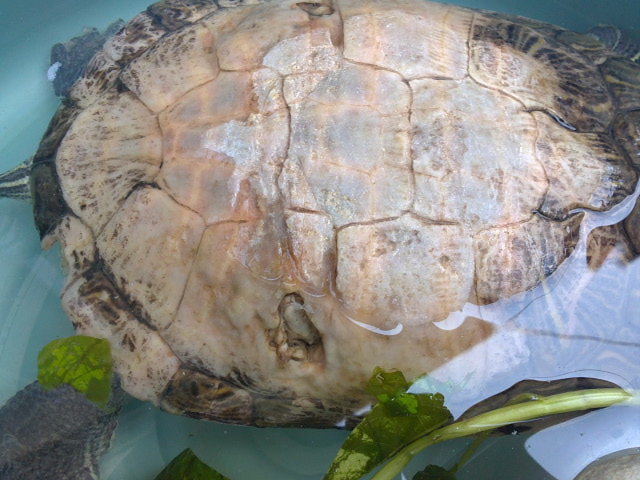 cracked/injured turtle shell
Question
turtle with injured sh
My dog bite and
cracked/injured turtle shell
Question
turtle with injured sh
My dog bite and
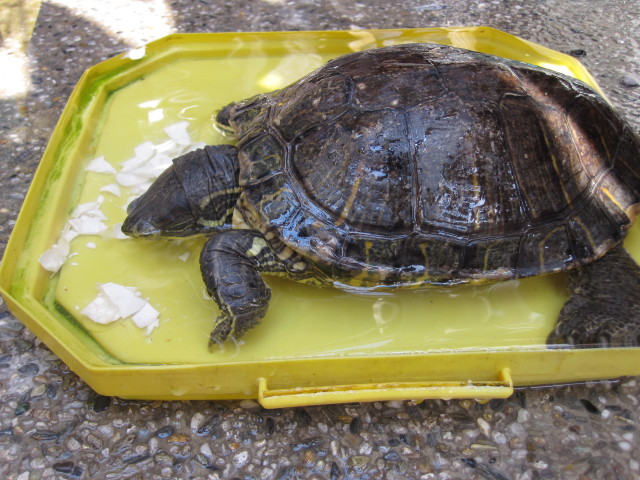 obesity
Questionobesity
QUESTION: heres another picture
obesity
Questionobesity
QUESTION: heres another picture
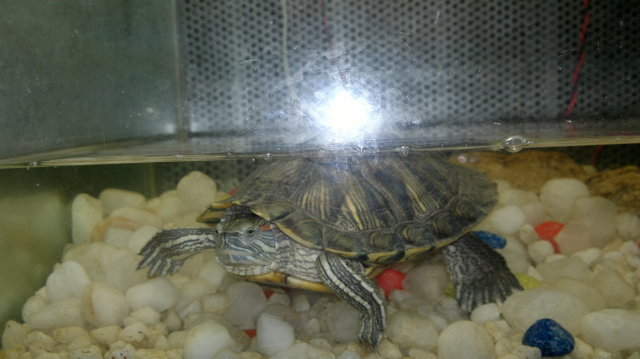 my tortise has stop eating
QuestionQUESTION: I am having 1 tortoise since 1 year b
my tortise has stop eating
QuestionQUESTION: I am having 1 tortoise since 1 year b
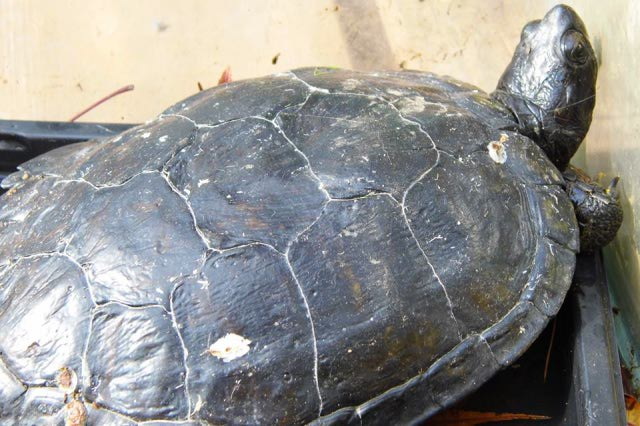 western box land turtle
Question
Turtle 1 Head
Hi! The manag
western box land turtle
Question
Turtle 1 Head
Hi! The manag
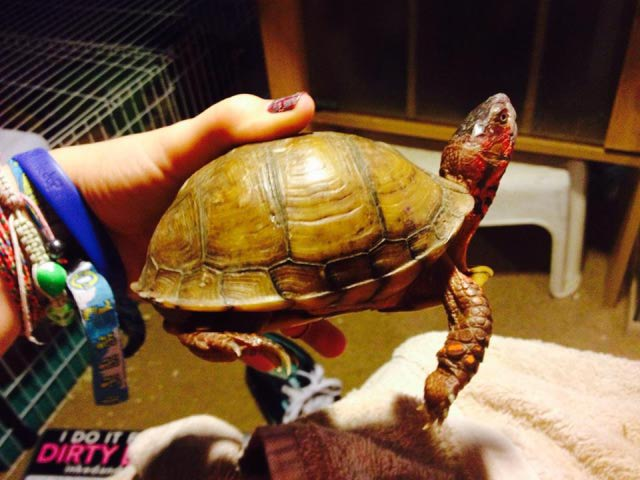 Box turtle!!
QuestionBox turtle
Box turtle
QUESTION: H
Box turtle!!
QuestionBox turtle
Box turtle
QUESTION: H